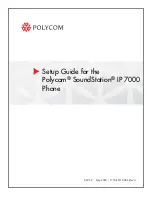
125
CH 5
FDA CONSUMER UPDATE
U.S. Food and Drug Administration-Center for Devices
and Radiological Health Consumer Update on Wireless
Phones
1. Do wireless phones pose a health hazard?
The available scientific evidence does not show that
any health problems are associated with using wire-
less phones. There is no proof, however, that wireless
phones are absolutely safe. Wireless phones emit low
levels of radiofrequency energy (RF) in the microwave
range while being used. They also emit very low levels
of RF when in the stand-by mode. Whereas high levels
of RF can produce health effects (by heating tissue),
exposure to low level RF that does not produce heat-
ing effects causes no known adverse health effects.
Many studies of low level RF exposures have not
found any biological effects. Some studies have sug-
gested that some biological effects may occur, but
such findings have not been confirmed by additional
research. In some cases, other researchers have had
difficulty in reproducing those studies, or in determin-
ing the reasons for inconsistent results.
2. What is FDA’s role concerning the safety of
wireless phones?
Under the law, FDA does not review the safety of radia-
tion-emitting consumer products such as wireless
phones before they can be sold, as it does with new
drugs or medical devices. However, the agency has
authority to take action if wire-less phones are shown
to emit radiofrequency energy (RF) at a level that is
hazardous to the user
.
124
CH 5
SAR INFORMATION
Before a phone model is available for sale to the pub-
lic, it must be tested and certified by the FCC that it
does not exceed the limit established by the govern-
ment adopted requirement for safe exposure. The
tests are performed in positions and locations (e.g., at
the ear and worn on the body) as required by the FCC
for each model. The highest SAR value for this model
phone when tested for use at the ear is 1.15 W/kg and
when worn on the body, as described in this user
guide, is 0.393 W/kg. (Body-worn measurements dif-
fer among phone models, depending upon available
accessories and FCC requirements). While there may
be differences between the SAR levels of various
phones and at various positions, they all meet the
government requirement for safe exposure.
The FCC has granted an Equipment Authorization for
this model phone with all reported SAR levels evaluat-
ed as in compliance with the FCC RF exposure guide-
lines. SAR information on this model phone is on file
with the FCC and can be found under the Display Grant
section of http://www.fcc.gov/oet/fccid after search-
ing on PP4TX-215A.
Additional information on Specific Absorption Rates
(SAR) can be found on the Cellular
Telecommunications Industry Association (CTIA) web-
site at http://www.wow-com.com.
•
In the United States and Canada, the SAR limit for
mobile phones used by the public is 1.6 watts/kg
(W/kg) averaged over one gram of tissue. The standard
incorporates a sub-stantial margin of safety to give
additional protection for the public and to account
for any variations in measurements.










































